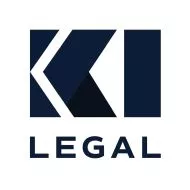For every business, the prospect of financial distress is daunting, but it does not have to signal the end. We've seen firsthand how utilizing bankruptcy options can provide a lifeline for struggling companies. Understanding how these mechanisms work can be the key to safeguarding a business's future.
Recognizing the Signs of Financial Distress
The first step in protecting your business is recognizing the signs of financial distress early. Operational cash flow problems, the inability to meet financial obligations, or increased debt burden are immediate red flags. Taking proactive steps at this stage can often prevent more severe financial consequences. It's crucial to consult with a financial advisor or legal professional to assess the situation and chart a path forward.
Bankruptcy as a Strategic Tool
When you hear the word "bankruptcy," it's easy to think of it as a defeat. However, the U.S. Bankruptcy Code provides several avenues that allow business owners to restructure or even eliminate debts. This, in turn, can offer a fresh start or a way to reorganize the business effectively. The two most commonly utilized forms are Chapter 7 and Chapter 11 bankruptcies, each offering unique advantages based on the specific needs of the business.
Chapter 7 Bankruptcy: Liquidation
Chapter 7 bankruptcy, often referred to as liquidation bankruptcy, caters to businesses that have realized that a turnaround isn't feasible. It provides a method for dissolving the business in an orderly manner, selling off assets to pay creditors. This process ensures a fair distribution of the business's remaining assets and allows owners to mitigate their liabilities.
Chapter 11 Bankruptcy: Reorganization
On the other hand, Chapter 11 bankruptcy is designed to help businesses restructure their debts and remain in operation. This reorganization plan allows the business to negotiate terms with creditors while continuing day-to-day operations. This approach is particularly beneficial for businesses that hold potential for recovery if given the chance to remove some of their immediate financial burdens.
Crafting a Strategic Bankruptcy Plan
Before filing for bankruptcy, it is imperative to have a well-devised plan. This involves a thorough analysis of the business's finances, assets, liabilities, and operational strengths and weaknesses. Collaboration with financial experts is crucial here. You should identify which form of bankruptcy aligns with the business's goals, the extent of debt burdens, and evaluate potential implications for creditors and stakeholders.
Engaging with Creditors
Communication is key when safeguarding your business. Engaging with creditors is an essential part of the bankruptcy process. Outlining a feasible and honest repayment plan can often result in more favorable terms. Creditors might agree to partial debt forgiveness or stretched repayment plans if they believe the business holds future value. Such negotiations can often be facilitated more effectively by legal professionals, ensuring that outcomes are fair and advantageous to all parties involved.
Protecting Assets
During bankruptcy proceedings, protecting the essential assets that drive your business is paramount. Working with legal advisors can help identify which assets are exempt under bankruptcy law. For small to mid-sized businesses, retaining critical operational assets can mean the difference between recovery and closure.
Rebuilding and Resilience
Filing for bankruptcy is not the end; rather, it's a pivotal part of the business's lifecycle. The process allows businesses to purge unmanageable debt and focuses on building a stronger, more resilient future. Post-bankruptcy, businesses often emerge more streamlined and efficient, having learned from past financial challenges.
The content of this article is intended to provide a general guide to the subject matter. Specialist advice should be sought about your specific circumstances.


